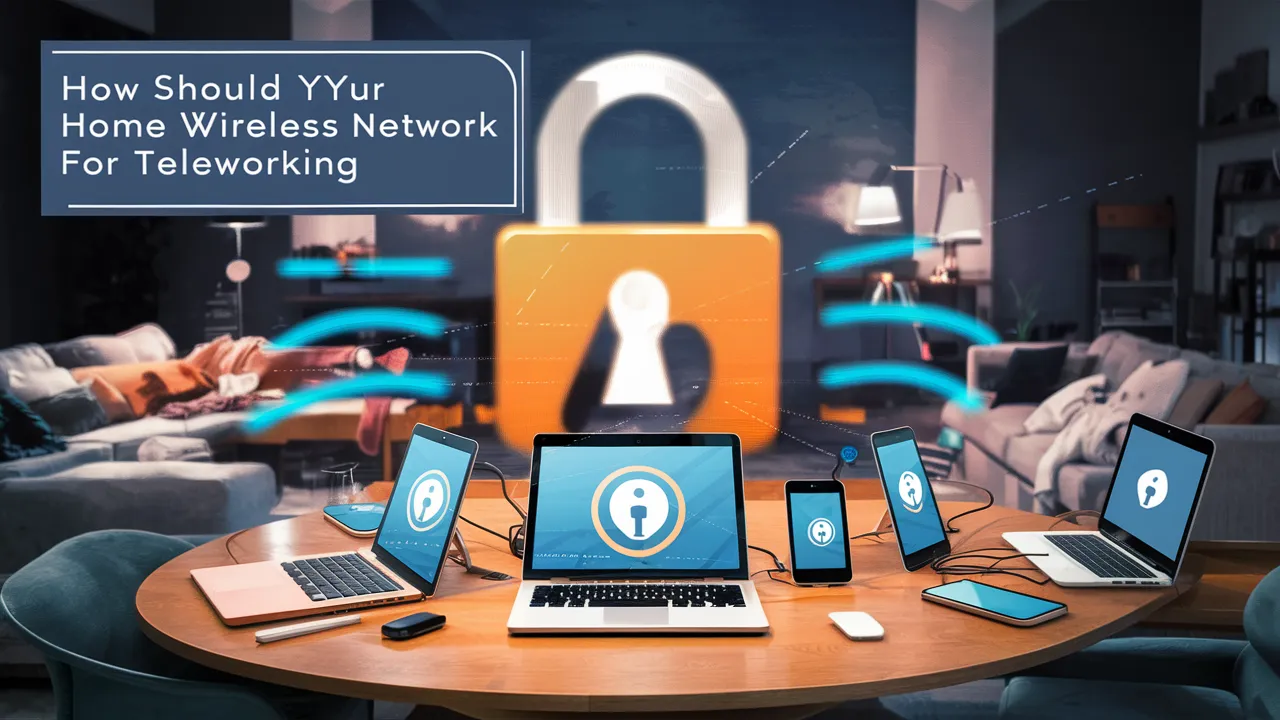Are you worried about how should you secure your home wireless network for teleworking? Securing your home wireless network is crucial in the era of telecommuting, where protecting sensitive work data and ensuring a productive environment for the workers are both an integral part.
As remote work becomes much more important overall, maintaining your home network to protect against cyber attacks is becoming increasingly important. In this article, we will discuss practical measures and approaches to how should you secure your home wireless network for teleworking.
1) One should set very strong passwords
Your home wireless network’s first line of defense is a very strong password. They should select a complicated password that includes both uppercase and lowercase letter characters, numbers, and also special symbols.
By changing the username and password, it becomes a lot harder for the attackers to determine whose Wi-Fi they are actually dealing with and therefore gain access to their network.
Hackers have advanced tools to try out thousands of various combinations for a password and also username. Do not use easily guessed information like birthdays or names for securing your home network.
2) Use WPA3, the latest encryption
Increase the power of encryption present in your wireless network by using the WPA3 – the latest Wi-Fi Protected Access standard. This better encryption method ensures stronger security mechanisms that protect your teleworking activities from unauthorized access. Encryption is a security blanket that secures the home network.
Whenever possible, opt for the most powerful encryption that is offered by your Wi-Fi router. When working remotely, encryption is maybe the most efficient method of securing network data at a remote site.
Encryption is achieved by either encoding the contents of a message or your data in such a way that hackers cannot make any sense of it.
3) Personalize Your Network Name (SSID) for Extra Protection
The name of the Wi-Fi network – SSID (Service Set Identifier) should not reveal any of your personal information or indicate where you are located.
Never use names such as Williom’s Network or 123 Main Street. I cannot fulfill this request. Do not use the default network names that may disclose personal information.
4) Enable And Setup Your Network Firewall
The smart firewall is the needed option for computer protection to fight against various online threats, including viruses- and malware-, and intrusions that may be dangerous.
While most wireless Wi-Fi routers have integrated firewalls, it is very essential to verify whether this security feature has been activated. There were times when these firewalls would be turned off automatically, hence leaving your network weak.
This additional layer of protection provides the security of your wireless network which any harmful attempts to get through your wireless network will be completely rejected.
5) Strengthen Your Bond via a VPN
One more very useful tool in your weapons to achieve this is a Virtual Private Network or VPN. This ensures the strong encryption of your data, which becomes very meaningless for the probable listeners. VPNs protect your online privacy by masking the IP address and providing encrypted internet traffic.
They offer limitless browsing through the elimination of all geo-restrictions and also access to content from anywhere. A VPN service provider can be selected using many considerations such as the physical locations of servers, speed, logging policies, and also user-friendliness.
One of the most important things that you must consider is choosing a trustworthy VPN service if you want to secure your home wireless network for teleworking.
6. Maintain an Updated Router by Regularly Updating Its Firmware
However, often the firmware for your home network needs to be updated to remain effective and secure just like any other hardware or software. Firmware is a program code that regulates your router, access points, and also other network components.
Indeed, firmware upgrades often include life-critical security patches to protect your home computer cyber awareness challenge. Since cyber threats continue to evolve, manufacturers regularly push updates that are needed for fixing the newly found loopholes (faults).
If you ignore these updates, your network may be prone to the attacks. Here are the short steps to guide you in updating your network firmware;
- Go to the website of your device’s manufacturer.
- You are accessing your router settings through a web browser.
- In the settings, locate the firmware update option.
- Get the latest firmware version.
- Before continuing, back up your router settings.
- After completing the download, please reboot your router for the implementation of the update.
7) Disable Remote Admin Access
Enabling remote admin access must be considered as one of the first steps to securing your home network. As remote admin access makes it possible to manage your network from the outside of the house, this could serve as a route for online threats.
Blocking this functionality ensures that only those who have the authority and possess physical access to your network can administratively change.
You can do this by logging in to your router’s settings and visiting the remote administration page. Turn off all the remote access settings, and make sure that the administrator accounts have strong unique passwords.
8)Update All Connected Devices
Many devices on your network have mobile functionality already supported, like computers, tablets, and smartphones. Therefore, through teleworking wireless network connections and the fact of possibly using public Wi-Fi youngsters become increasingly exposed to viruses infections, or any other involvement.
When used outside of your home, the probability increases at these viruses and hack attempts. It’s critical to implement proper cybersecurity procedures to protect your home router.
Secure must also have strong, unique passwords that are not easy to guess. This is where a password manager would be very useful.
9) Lift Your Security with the Two-Factor Authentication (2FA).
If available through your router, turn on the Two-Factor Authentication (2FA) to provide greater security for your login. This guarantees that despite your password being leaked, gaining unauthorized access remains a difficult task.
Conclusion
Finally, securing your home wireless network for teleworking is a very complex attempt that requires the optimal combination of best practices. These interventions and being up to date on the developing threats will help build a secure environment where remote work activities would thrive.
Stay proactive, stay secure!
1. How did you secure your home wireless network for teleworking?
In a remote setup, encryption stands as one of the most effective methods used to protect your network data. Encryption works by using an algorithm to scramble your data or the contents of the message that cannot be deciphered by hackers. For the home Wi-Fi network, WPA3 is currently considered to be the most secure encryption type.
2. How can you secure your home Wi-Fi network?
To rename the home Wi-Fi.
Your wireless network password should be unique and strong.
Enable network encryption.
Turn off network name broadcasting.
Update your router’s software.
Ensure that you have a reliable firewall.
Connect to your network using VPNs.
3. Which of the following is the best option for securing a home wireless network?
Encrypting your network is as simple as refreshing the settings of your router to either WPA3 Personal or WPA2 Personal. WPA3 is the latest and best encryption on offer, but both will suffice in providing a form of scrambling your information.
4. What is the most secure encryption method for a home wireless network?
Among the four wireless protocols of WEP, WPA, WP2, and WP3; experts note that the best for Wi-fi security is already evident in this era due to user preferences whereby they prefer only on WPA and. The state-of-the-art wireless encryption protocol WPA3 is therefore the safest option.











